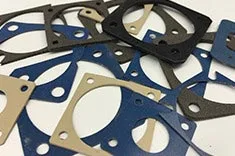EMI Shielding Products
- Custom Gasket Fabrication
- Connector Gaskets
- Bonded O Ring
- Custom Gaskets
- Conduct-O-Knit Knitted Wire Mesh
- Conduct-O-Seal Combo Gasket
- Conduct-O-Elastomer
- Conduct-O-Seal Oriented Wire in Silicone Gasket Material
- Conduct-O-Mesh Tape
- Conduct-O-Foam
- Conduct-O-Bond
- Optical Filters For Electronic Displays
- Shielded Vent Panels
- ESC Board Level Shielding
- 300 Series
Three Common Options for EMI RFI Shielding Materials
You have many options to consider when determining EMI RFI shielding material. No two materials offer the same benefits, so you must choose materials based on your application's exact specifications. EMI and RFI shielding need to be constructed to the highest standards because these shields are used as life-saving medical and military equipment. Below, we want to highlight three popular metals used to construct EMI RFI shieldinging.

Pre-tin plated steel is a great option when the cost is a factor. This metal is also highly suitable for low frequencies (kHz range through GHz range). Tin plating is ideal when corrosion protection protects the steel from rusting while also maintaining great solderability on the surface. IT is easy to attach EMI shielding to the trace on the surface board during assembly.
Copper is arguably the most reliable metal to choose from for EMI and RFI shielding. Compared to other materials, copper stands out as an effective material for attenuating electrical and magnetic waves. Copper is often found in medical equipment, like MRI devices. They are used in personal and business computers. Copper is a versatile metal that can be fabricated along with other alloys (brass, bronze, beryllium copper, and more). It is important to keep in mind that copper is an expensive option compared to other common materials.
EMI RFI Shielding
Copper Alloy 770 is also commonly referred to as nickel silver. It is a copper alloy composed of copper, zinc, and nickel. Copper alloy 770 is most known for its corrosion resistance. For EMI shielding, the material works best in mid frequencies between kHz and GHz. Permeability for this alloy is one that allows it to be an MRI-related application where magnetic materials are not permitted.
Related Reading- Using EMI Shielding to Reduce Unwanted NoiseRFI shielding and EMI shielding are the best tools to use to combat unwanted noise.
- Three Common EMI Shielding Materials
- Do RFI and EMI Start with a Circuit



